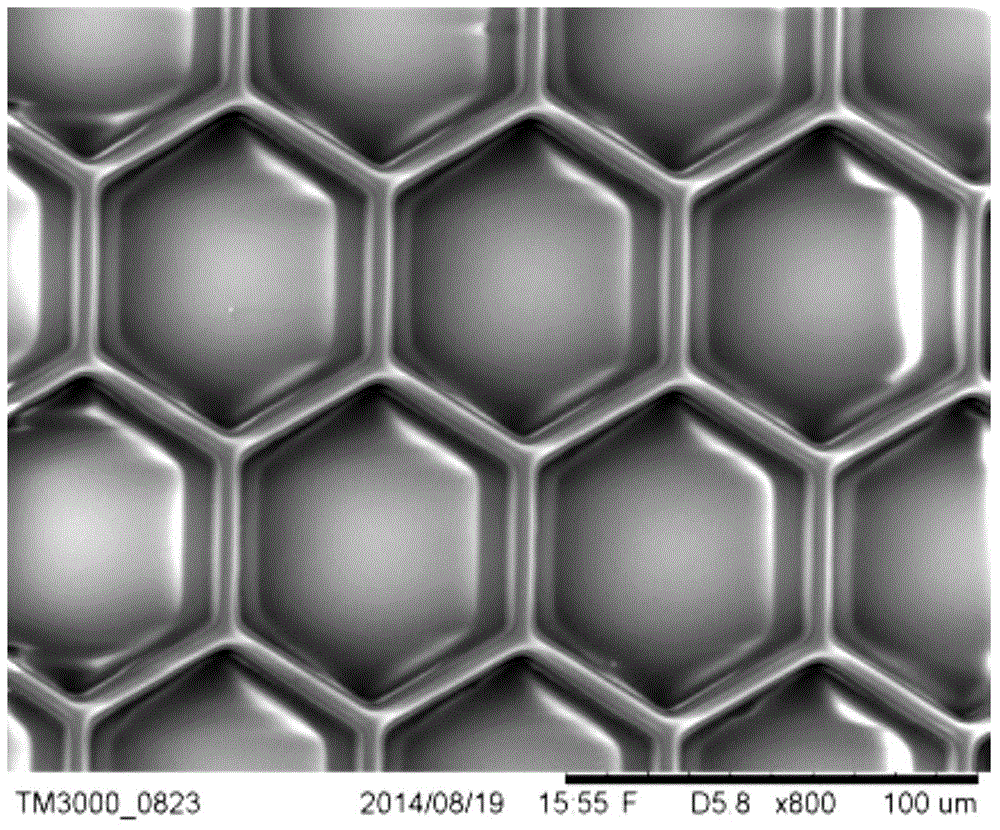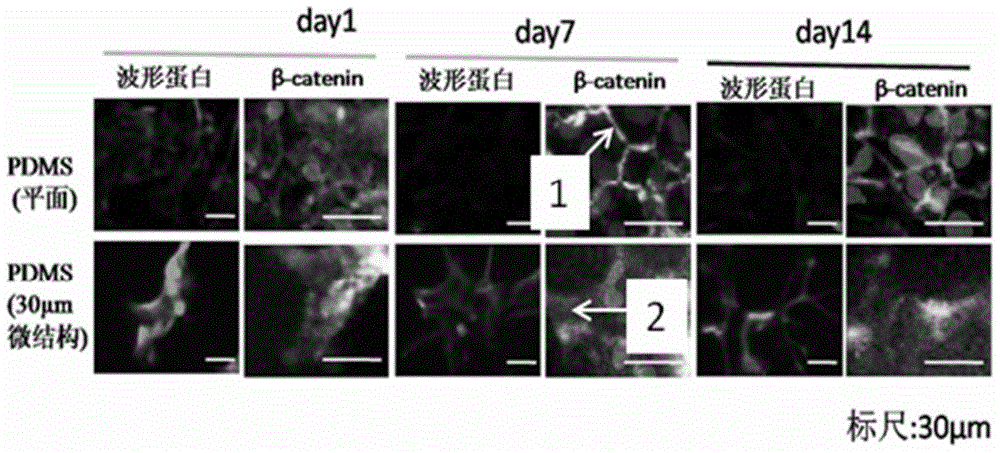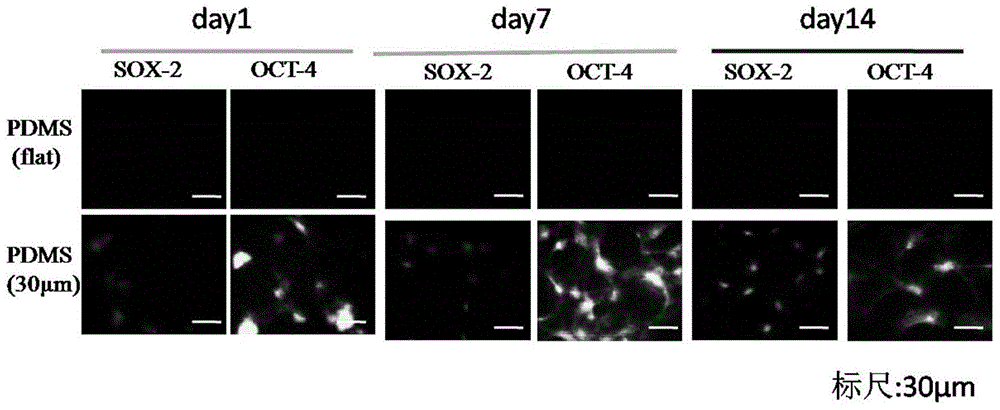Method utilizing surface microstructure to activate neural astrocyte
A glial cell and microstructure technology, applied in nervous system cells, animal cells, nervous system diseases, etc., to achieve broad application prospects and avoid glial scars
- Summary
- Abstract
- Description
- Claims
- Application Information
AI Technical Summary
Problems solved by technology
Method used
Image
Examples
Embodiment 1
[0031] Using computer-aided design and wet etching method, a regular hexagonal convex surface membrane plate with a side length of 30 μm was fabricated, the distance between the regular hexagons was 5 μm, and the height difference between the convex surface and the groove was 60 μm. Mix the PDMS monomer and initiator evenly at a ratio of 10:1, pour it on the template for reverse filming, and cure the PDMS after 30 minutes at 80°C. Use tweezers to peel off the PDMS to obtain a PDMS chip with a regular hexagonal microstructure on the concave surface (see figure 1 ). Put the side with the microstructure up into the Petri dish, and use the viscosity of PDMS itself to fix it to the bottom of the Petri dish. Sterilize overnight by UV irradiation.
[0032] Primary extraction of newborn 24h neonatal mouse cerebral cortex astroglial cells, after removal of miscellaneous cells, the cells were grown to confluence, the cells were digested with 0.25% trypsin to make a cell suspension, an...
Embodiment 2
[0034] Fabricate a regular hexagonal concave surface film plate with a side length of 30 μm, the distance between the regular hexagons is 5 μm, and the height difference between the concave surface and the surrounding raised frame is 60 μm. A PDMS chip with a regular hexagonal microstructure on the convex surface was obtained after using the PDMS reverse film. Put the side with the microstructure up into the Petri dish, and use the viscosity of PDMS itself to fix it to the bottom of the Petri dish. Sterilize overnight by UV irradiation.
[0035] The suspension of primary extracted neonatal mouse astrocytes was added to the surface of the PDMS microstructure, and placed in an incubator for adherent culture for 1-14 days. The glial cells grown on the convex surface were identified, and the results showed that the cells had similar changes to the concave surface, and the expression of vimentin and stemness-related protein SOX-2 in the cells increased ( Figure 5 ).
PUM
 Login to View More
Login to View More Abstract
Description
Claims
Application Information
 Login to View More
Login to View More - R&D
- Intellectual Property
- Life Sciences
- Materials
- Tech Scout
- Unparalleled Data Quality
- Higher Quality Content
- 60% Fewer Hallucinations
Browse by: Latest US Patents, China's latest patents, Technical Efficacy Thesaurus, Application Domain, Technology Topic, Popular Technical Reports.
© 2025 PatSnap. All rights reserved.Legal|Privacy policy|Modern Slavery Act Transparency Statement|Sitemap|About US| Contact US: help@patsnap.com



